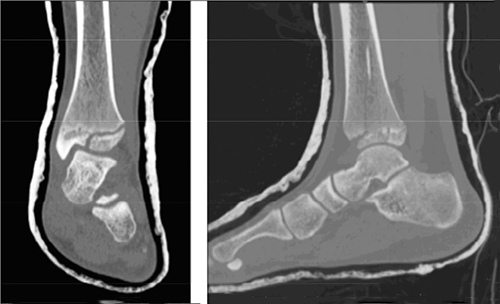QUESTION 3 OF 7
A 13 years old male presented to the ED with an ankle fracture following a football injury. The foot is neurovascularly intact,an isolated closed injury.A CT was performed (Figure 1).

Figure 1.CT scan coronal and sagittal views
Concerning this injury all the following statements are TRUE except
QUESTION ID: 1251